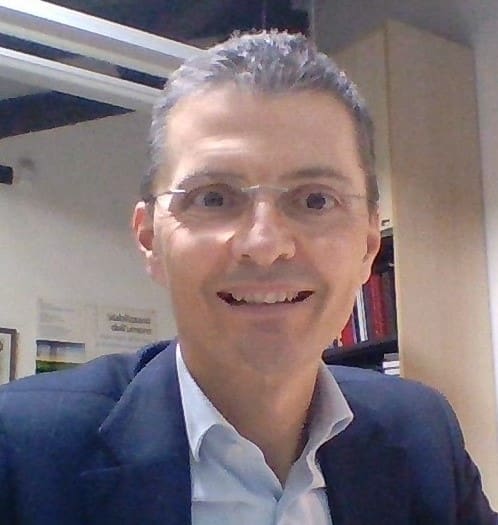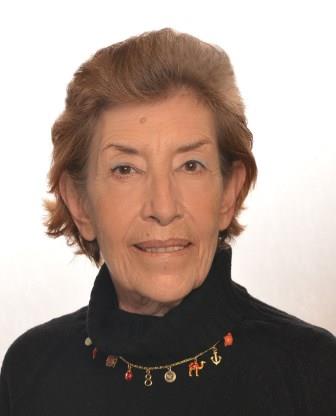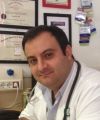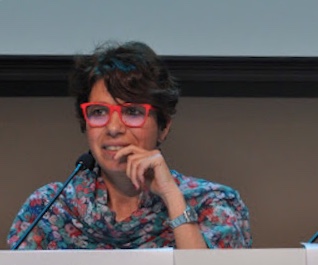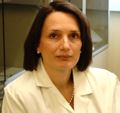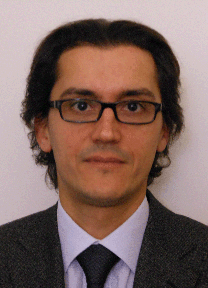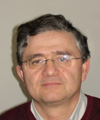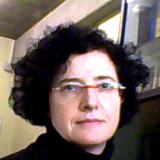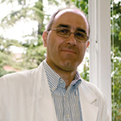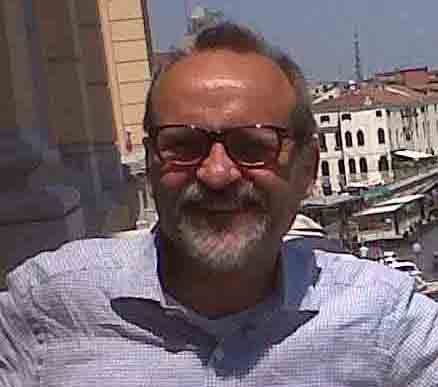Studying at the University of Verona
Here you can find information on the organisational aspects of the Programme, lecture timetables, learning activities and useful contact details for your time at the University, from enrolment to graduation.
Academic calendar
The academic calendar shows the deadlines and scheduled events that are relevant to students, teaching and technical-administrative staff of the University. Public holidays and University closures are also indicated. The academic year normally begins on 1 October each year and ends on 30 September of the following year.
Course calendar
The Academic Calendar sets out the degree programme lecture and exam timetables, as well as the relevant university closure dates..
| Period | From | To |
|---|---|---|
| INF. VR 1° anno 1° semestre | Oct 1, 2015 | Dec 22, 2015 |
| INF. VR 2° anno 1° semestre | Oct 1, 2015 | Dec 22, 2015 |
| INF. VR 3° anno 1° semestre | Oct 19, 2015 | Dec 22, 2015 |
| INF. VR 1° anno 2° semestre | Feb 1, 2016 | Apr 8, 2016 |
| INF. VR 3° anno 2° semestre | Feb 1, 2016 | Mar 23, 2016 |
| INF. VR 2° anno 2° semestre | Apr 18, 2016 | Jun 17, 2016 |
| Session | From | To |
|---|---|---|
| INF. VR Sessione invernale 1° anno | Jan 7, 2016 | Jan 29, 2016 |
| INF. VR Sessione invernale 2° anno | Jan 7, 2016 | Jan 29, 2016 |
| INF. VR Sessione invernale 3° anno | Jan 7, 2016 | Jan 29, 2016 |
| INF. VR Sessione primaverile 1° anno | Apr 11, 2016 | Apr 22, 2016 |
| INF. VR Sessione estiva 2° anno | Jun 27, 2016 | Jun 22, 2016 |
| INF. VR Sessione estiva 3° anno | Jul 11, 2016 | Jul 29, 2016 |
| INF. VR Sessione estiva 1° anno | Jul 18, 2016 | Jul 31, 2016 |
| INF. VR Sessione autunnale 3° anno | Sep 1, 2016 | Sep 30, 2016 |
| INF. VR Sessione autunnale 1° anno | Sep 1, 2016 | Sep 30, 2016 |
| INF. VR Sessione autunnale 2° anno | Sep 5, 2016 | Sep 30, 2016 |
Exam calendar
Exam dates and rounds are managed by the relevant Medicine Teaching and Student Services Unit.
To view all the exam sessions available, please use the Exam dashboard on ESSE3.
If you forgot your login details or have problems logging in, please contact the relevant IT HelpDesk, or check the login details recovery web page.
Should you have any doubts or questions, please check the Enrollment FAQs
Academic staff
 elisabetta.allegrini@aovr.veneto.it
elisabetta.allegrini@aovr.veneto.it
 assunta.biasi@univr.it
assunta.biasi@univr.it
 luisa.bissoli@mail.azosp.vr.it
luisa.bissoli@mail.azosp.vr.it
 federica.bonato@aor.veneto.it
federica.bonato@aor.veneto.it
 oncologia.medica.leg@aulsslegnago.it
oncologia.medica.leg@aulsslegnago.it
 c.bonin@libero.it
c.bonin@libero.it
 daniela.cafaro@univr.it
daniela.cafaro@univr.it
Cunico Laura
 laura.cunico@univr.it
laura.cunico@univr.it
 0444752922
0444752922
 stefania.danese@univr.it
stefania.danese@univr.it
 francesca.defanti@univr.it
francesca.defanti@univr.it
 stefano.detogni@univr.it
stefano.detogni@univr.it
Leonardelli Paola
 laura.messina@univr.it
laura.messina@univr.it
 anna.passarin@gmail.com
anna.passarin@gmail.com
Pernigo Pier Alberto
 pieralberto.pernigo@ospedaleuniverona.it
pieralberto.pernigo@ospedaleuniverona.it
 zenogabriele.poli@univr.it
zenogabriele.poli@univr.it
 er.vedovi@virgilio.it
er.vedovi@virgilio.it
Zadra Tania
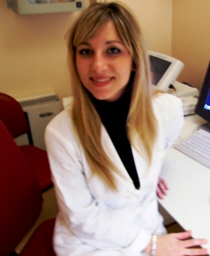
Zoccatelli Giada
 giada.zoccatelli@univr.it
giada.zoccatelli@univr.it
 045 812 3917
045 812 3917
Study Plan
The Study Plan includes all modules, teaching and learning activities that each student will need to undertake during their time at the University.
Please select your Study Plan based on your enrollment year.
1° Year
| Modules | Credits | TAF | SSD |
|---|
Pathophysiology applied at Nursing
Biomolecular fondamentals of life
Morphological and functional fundamentals of life
General and methodological nursing
Health and safety promotion
Clinical practice (1st year)
2° Year activated in the A.Y. 2016/2017
| Modules | Credits | TAF | SSD |
|---|
Application of diagnostic and therapeutic processes
Chronic clinical nursing care
Clinical nursing care in surgical area
Clinical nursing care in medical area
Relationship in nursing care
Clinical practice (2nd year)
3° Year activated in the A.Y. 2017/2018
| Modules | Credits | TAF | SSD |
|---|
Maternal and paediatric nursing care
Critical nursing care
Evidence based nursing
Health organizations and care processes
Legal, bioethic and deontological principles of professional practice
Clinical practice (3rd year)
| Modules | Credits | TAF | SSD |
|---|
Pathophysiology applied at Nursing
Biomolecular fondamentals of life
Morphological and functional fundamentals of life
General and methodological nursing
Health and safety promotion
Clinical practice (1st year)
| Modules | Credits | TAF | SSD |
|---|
Application of diagnostic and therapeutic processes
Chronic clinical nursing care
Clinical nursing care in surgical area
Clinical nursing care in medical area
Relationship in nursing care
Clinical practice (2nd year)
| Modules | Credits | TAF | SSD |
|---|
Maternal and paediatric nursing care
Critical nursing care
Evidence based nursing
Health organizations and care processes
Legal, bioethic and deontological principles of professional practice
Clinical practice (3rd year)
Legend | Type of training activity (TTA)
TAF (Type of Educational Activity) All courses and activities are classified into different types of educational activities, indicated by a letter.
Pathophysiology applied at Nursing [Matricole pari] (2015/2016)
The teaching is organized as follows:
INFERMIERISTICA CLINICA
Credits
3
Period
See the unit page
Location
VERONA
Academic staff
See the unit page
Learning outcomes
Module: SEMEIOTICA E FISIOPATOLOGIA
-------
------------------------------------------------------------------------------------
Module: FARMACOLOGIA GENERALE
-------
To understand the basic principles of pharmacokinetics and pharmacodynamics; to understand the drug development process and the Italian pharmaceutical market data; to evaluate the benefit/risk profile of the drugs; to understand the basics of administration and management of drug therapies. To know the main characteristics of antimicrobial and nonsteroidal anti-inflammatory drugs.
Module: PATOLOGIA GENERALE
-------
da inserire---------------------------------------------------------
Module: INFERMIERISTICA CLINICA
-------
Program
Module: SEMEIOTICA E FISIOPATOLOGIA
-------
------------------------------------------------------------------------------------------
Module: FARMACOLOGIA GENERALE
-------
1.To understand the general principles of pharmacology; know the main definitions (e.g. drug, medicine, placebo); analysis of the Italian pharmaceutical market (types of prescriptions, bioequivalents and biosimilars, fact sheets and leaflets); analysis of drug consumption (OsMed data); classification of drugs according to the NHS and the International Classification ATC; drug development phases; basic principles to evaluate the efficacy and safety of the drugs; the golden rules for Randomized Controlled Clinical Trials (RCT).
2. To understand the fundamental scientific principles of drug action (pharmacodynamics) and the various mechanisms by which drugs can mediate their pharmacological effect.
3. To understand the fundamental principles of pharmacokinetics those underlie the absorption, distribution, metabolism and elimination of drugs in the body and thereby affect drug effectiveness. To know the main pharmacokinetic parameters, such as half-life, clearance, distribution volume, area under the curve, etc.
4. To understand the main factors which influence the dose and duration of therapy. To apply the rules for dose calculation.
5. To understand the adverse drug reactions (ADRs): classification, mechanisms, characteristics, pharmacovigilance methods, and Italian and European pharmacovigilance laws. Discuss nursing responsibilities with reporting suspected ADRs.
6. Drug-drug interactions: antagonism, synergic action. To understand the influence of self-medication and polypharmacy for the drug-drug interactions.
7. To understand the basic principles of antimicrobial chemotherapy. To know the following terms: spectrum of action, bacterial resistance, bacteriostatic and bactericidal antibiotics. To know the main classes of antimicrobial drugs, particularly their mechanisms of action, therapeutic indications, contraindications and main adverse drug reactions. To know the main characteristics of antitumor agents.
8. To know the nonsteroidal anti-inflammatory drugs (NSAIDs), with particular regard to their mechanisms of action, therapeutic indications, epidemiological data, contraindications and main adverse drug reactions.
Module: PATOLOGIA GENERALE
-------
da inserire---------------------------------------------------------
Module: INFERMIERISTICA CLINICA
-------
Bibliography
| Author | Title | Publishing house | Year | ISBN | Notes |
|---|---|---|---|---|---|
| Conforti A., Cuzzolin L., Leone R., Moretti U., Pignataro G., Taglialatela M., Vanzetta M. | Farmacologia per le professioni sanitarie | Idelson-Gnocchi Sorbona | 2015 | 978-88-7947-592-1 | |
| G.M. Pontieri | Elementi di Patologia generale per i corsi di laurea in professioni sanitarie (Edizione 3) | Piccin | 2012 | 978-88-299-2130-0 |
Examination Methods
Module: SEMEIOTICA E FISIOPATOLOGIA
-------
---------------------------------------------------------------------------------------
Module: FARMACOLOGIA GENERALE
-------
Written test. The script consists of a total of 65 questions relating to all teaching modules of the integrated course. The General Pharmacology questions (n= 15) are with multiple choice answers (1 correct between 5). The questions are related to the course program. Each correct answer is worth one point, the test is passed if you reach the minimum overall score of 38 points with a score of at least 11 for Nursing and 8 for the other three modules.
Module: PATOLOGIA GENERALE
-------
da inserire---------------------------------------------------------
Module: INFERMIERISTICA CLINICA
-------
Career prospects
Module/Programme news
News for students
There you will find information, resources and services useful during your time at the University (Student’s exam record, your study plan on ESSE3, Distance Learning courses, university email account, office forms, administrative procedures, etc.). You can log into MyUnivr with your GIA login details: only in this way will you be able to receive notification of all the notices from your teachers and your secretariat via email and soon also via the Univr app.
Gestione carriere
Guida ai programmi degli insegnamenti
Guida ai programmi degli insegnamenti
Documents
| Title | Info File |
|---|---|
|
|
pdf, it, 1594 KB, 12/12/22 |
|
|
pdf, it, 1310 KB, 02/09/21 |
Orario lezioni
Si pubblicano gli orari delle lezioni relativi al 2° semestre A.A. 2023/2024
Gli orari potrebbero subire alcune modifiche, pertanto si consiglia di consultare l'orario delle lezioni giornalmente nell‘area riservata MyUnivr e/o ORARIO LEZIONI.
Documents
| Title | Info File |
|---|---|
|
|
pdf, it, 126 KB, 06/03/24 |
|
|
pdf, it, 128 KB, 09/02/24 |
|
|
pdf, it, 120 KB, 18/03/24 |
|
|
pdf, it, 122 KB, 18/03/24 |
|
|
pdf, it, 125 KB, 20/03/24 |
|
|
octet-stream, it, 32 KB, 04/04/24 |
Graduation
Documents
| Title | Info File |
|---|---|
|
|
pdf, it, 242 KB, 19/01/24 |
|
|
pdf, it, 80 KB, 06/04/24 |
|
|
pdf, it, 43 KB, 06/04/24 |
|
|
pdf, it, 44 KB, 09/04/24 |
|
|
pdf, it, 148 KB, 06/04/24 |
|
|
pdf, it, 108 KB, 06/04/24 |
|
|
pdf, it, 115 KB, 06/04/24 |
|
|
pdf, it, 1487 KB, 18/02/22 |
|
|
pdf, it, 437 KB, 22/03/24 |
|
|
pdf, it, 957 KB, 22/03/24 |
|
|
pdf, it, 424 KB, 19/01/24 |
List of theses and work experience proposals
| theses proposals | Research area |
|---|---|
| Progetto WITHSTAND- Supportare la resilienza negli eventi avversi in sanità | The Human Mind and Its Complexity: Cognitive science, psychology, linguistics, philosophy of mind - Clinical and health psychology |
Tirocinio professionalizzante
Finalità del Tirocinio
Le attività di tirocinio sono finalizzate a far acquisire allo studente competenze specifiche previste dal profilo professionale. Per conseguire tali finalità formative, si possono attivare convenzioni con strutture, che rispondano ai requisiti di idoneità per attività, dotazione di servizi e strutture.
I 60 crediti minimi riservati al tirocinio sono da intendersi come impegno complessivo necessario allo studente per raggiungere le competenze professionali “core” previste dal rispettivo profilo professionale.
Il tirocinio professionale comprende:
- sessioni tutoriali che preparano lo studente all’esperienza;
- esercitazioni e simulazioni in cui si sviluppano le abilità tecniche, relazionali e metodologiche in situazione protetta prima o durante la sperimentazione nei contesti reali;
- esperienze dirette sul campo con supervisione;
- sessioni tutoriali e feedback costanti;
- compiti didattici, elaborati e approfondimenti scritti specifici e mandati di studio guidato.
La valutazione delle competenze acquisite in tirocinio.
Le esperienze di tirocinio devono essere progettate, valutate e documentate nel percorso dello studente. Durante ogni esperienza di tirocinio lo studente riceve valutazioni formative sui suoi progressi sia attraverso colloqui e schede di valutazione.
Al termine di ciascun anno di corso viene effettuata una valutazione sommativa (certificativa) per accertare i livelli raggiunti dallo studente nello sviluppo delle competenze professionali attese. La valutazione viene effettuata da una Commissione presieduta dal Coordinatore della Didattica Professionale (CDP), e composta da almeno un docente e da un Tutor professionale. Tale valutazione è la sintesi delle valutazioni formative, via via, documentate durante l’anno di corso, il profitto raggiunto negli elaborati scritti e le performance delle abilità tecniche assistenziali e relazionali dimostrate all’esame di tirocinio che può essere realizzato con esami simulati, colloqui, prove scritte applicative.
L’esame annuale di tirocinio prevede un unico appello per anno accademico, salvo particolari situazioni per le quali la commissione didattica potrà concedere un appello straordinario.
La valutazione sommativa del tirocinio sarà espressa e registrata nella carriera in trentesimi in base al livello di raggiungimento degli obiettivi. Le modalità di registrazione del voto di profitto sono:
- “assente” pre-iscritto che non ha frequentato alcuna esperienza di tirocinio;
- “ritirato” sospensione durante il tirocinio per problemi di salute, gravidanza o per motivazioni personali;
- “insufficiente” non raggiungimento del livello atteso negli obiettivi formativi (anche se lo studente ha sospeso la frequenza al tirocinio o non sostenuto l’esame finale).
Prerequisiti di accesso al tirocinio.
Il Coordinatore della Didattica Professionale (CDP), ammette alla frequenza dell’esperienza di tirocinio previsto per l’anno di corso, gli studenti che hanno frequentato regolarmente:
- le attività teoriche, in particolare gli insegnamenti delle discipline professionali dell’anno in corso e dell’anno precedente
- laboratori professionali ritenuti propedeutici al tirocinio
Ulteriori dettagli sono disciplinati dal Regolamento del corso di studio
Per maggiori informazioni consultare la pagina del servizio
Documents
| Title | Info File |
|---|---|
|
|
pdf, it, 343 KB, 16/11/23 |
Attività Seminariali/a scelta dello studente
Attività Seminariali/a scelta dello studente
Documents
| Title | Info File |
|---|---|
|
|
pdf, it, 121 KB, 12/10/23 |
|
|
pdf, it, 344 KB, 12/10/23 |
|
|
octet-stream, it, 39 KB, 07/12/22 |
|
|
pdf, it, 703 KB, 10/11/23 |
Guida alle attività formative
Guida alle attività formative
Documents
| Title | Info File |
|---|---|
|
|
pdf, it, 1396 KB, 28/11/23 |
|
|
pdf, it, 1269 KB, 31/10/23 |
|
|
pdf, it, 554 KB, 02/11/23 |
Linee guida per riconoscimento cfu
Lo studente che intende chiedere il riconoscimento di moduli o insegnamenti pregressi dovrà presentare domanda, entro il 30 novembre dell’anno accademico in corso, seguendo le indicazioni indicate al link seguente: https://www.univr.it/it/i-nostri-servizi/segreterie-studenti/gestione-carriere-studenti-medicina-e-chirurgia/riconoscimento-crediti-acquisiti-da-una-carriera-pregressa-medicina
Documents
| Title | Info File |
|---|---|
|
|
pdf, it, 295 KB, 09/11/21 |
Student login and resources
Attività didattiche regime part-time
Modalità di richiesta
La domanda di iscrizione part-time può essere presentata all'inizio di ogni anno accademico e comunque entro il 30 novembre di ogni anno. Entro lo stesso termine, se necessario, lo studente potrà richiedere di tornare al regime full-time. Al link seguente la pagina del servizio https://www.univr.it/it/i-nostri-servizi/segreterie-studenti/flessibilita-nella-frequenza-dei-corsi/possibilita-di-iscrizione-part-time-e-ripristino-full-time
Una volta inviata la domanda, lo studente concorda in via preventiva con il Coordinatore della didattica professionale (CDP), il piano di studi che intende perseguire nel periodo di part-time compilando il modulo in allegato
Documents
| Title | Info File |
|---|---|
|
|
octet-stream, it, 1309 KB, 21/10/22 |
Appelli d'esame
Documents
| Title | Info File |
|---|---|
|
|
pdf, it, 124 KB, 17/04/24 |



